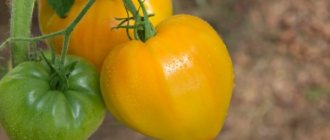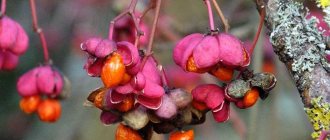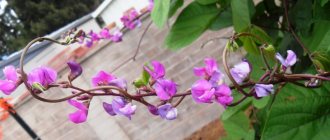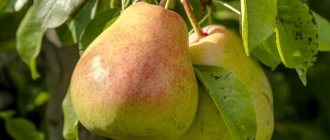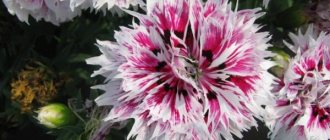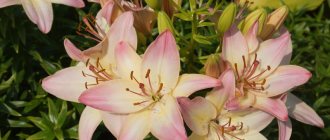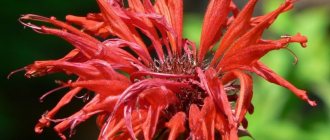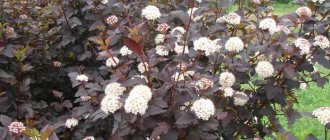- September 10, 2018
- Trees and shrubs
- Vladimir Storozhenko
Decorating your own garden plot can be done using many plants. These can be flowers, climbing vines, trees. However, shrubs have a special place in landscape design. The most beautiful of them, which has an incredibly pleasant aroma during flowering, is the silver oleaster. The features of its cultivation will be discussed further.
Description of the plant
Silver oleaster (photo and description below) or gumi is a deciduous shrub that looks like a tree. An adult plant reaches a height of two to four and a half meters, depending on growing conditions. During the growth period, it increases in height by 15 cm annually. In its homeland, China and Japan, the presented plant is a common fruit crop.
Externally, the plant looks very impressive. Its description should be considered in detail. The plant has grayish-brown branches. The trees are covered with an openwork pattern and become reddish by autumn. Well-branched shoots are covered with spines up to five centimeters long. The ovoid leaves are covered with silvery scales and do not change color until they fall in November.
In June-July, the oleaster tree blooms with small creamy-yellow tubular flowers, which are collected in threes in the leaf axils. The flowers have a pleasant aroma, which attracts many pollinating insects.
The sucker begins to bear fruit in the sixth to eighth year. Its fruits are small oval berries with a large seed, silvery at first, and as they ripen dark red with many silver specks. They hold tightly on long stalks and do not fall off for a long time. These berries resemble the fruits of an olive tree, which is why the plant is popularly called wild olive.
Types of vitamin bush
Silver sucker is not new to our latitudes, but its spread to garden plots and city parks is still slow. The reason can be considered its thorniness and small fruits; moreover, not enough is known about the benefits of its leaves, flowers, and berries.
There are several names for this beautiful plant:
- sucker;
- scammer;
- wild olive;
- Jeddah;
- silverfish;
- silver berry;
- when;
- pshat.
Botanists count about 40 of its species, both trees and shrubs, all of them very decorative. Breeders determine the following basic forms:
- Silvery , coming from the east of the continent of America.
- Gummy or multi-flowered , with tasty red berries, an alien from Japan and China.
- Narrow-leaved , a lover of heat, grows in the south of Russia, Kazakhstan, the Caucasus, and Central Asia.
- Umbelliferous has the healthiest berries and is common in East Asia.
- The prickly one first appeared in Japan. It is distinguished by brownish-red fruits, especially beautiful in autumn.
- Golden , recognizable by the yellow stripe along the leaf, is the most popular and widespread species of silver oleaster.
Silver oleaster is a plant that is interesting in all respects. Man uses almost all of its parts - fruits, leaves, bark, roots in cooking, in medicine, and the entire plant as a design object.
Lokhovnik is a tree-like thorny shrub, a deciduous honey plant that remains decorative in winter and warm weather. The leaves are silvery on both sides all season and fall in late autumn. Silver oleaster is an unpretentious plant, frost-resistant, takes root well in mid-latitude conditions, and does not require special attention in the garden. The crown is medium spreading, growth is rather slow - during the year the tree adds about 15 cm. Loves open sunny places.
Growing, planting and caring for dogwood bushes
Silverweed blooms in early summer with yellow, medium-sized flowers that emit a strong aroma that attracts bees. The gum bush's bloom lasts about 20 days, leaving behind oval or spherical fruits. The berries of the lochovnik are unusual, covered as if with silver scales, mealy, sweet.
Agrotechnical characteristics
The yield of silver oleaster (photo below) initially does not exceed four kilograms, but after two years you can get up to 30 kg of berries per bush annually. This result can be achieved by ensuring cross-pollination of plants. To do this, you need to have two or three gumi bushes on the site. The crop is characterized by early fruiting and annual yield.
The root system of the plant is superficial. They are located at a depth of up to 40 cm. But in the horizontal direction, the roots grow one and a half to two times wider than their own crown. On the roots of gumi there are growths formed by nodule nitrogen-fixing plants that saturate the soil with nitrogen. This is why the sucker is so undemanding about the quality of the soil. It can grow in the poorest soil.
Frost resistance
The silver sucker tree (photo can be viewed below) is unpretentious. It is quite resistant to frost, with the exception of the upper part of young shoots, the wood of which does not have time to fully ripen and freezes during the winter.
This property is compensated by the good restorative qualities of the plant and the ability to form many new shoots. To protect the bush from frost, its young shoots are tilted to the ground and fixed so that in winter the snow completely covers them.
You can also cover the bush with spruce branches, straw, brushwood, dry leaves or sawdust. It is important not to use dense materials for this - burlap or polyethylene. This can lead to damping off and rotting of the plant.
Collection and preparation
Silver sucker is harvested for medicinal purposes throughout the growing season. In May and until mid-June, the plant's buds and young leaves are collected; closer to autumn, as they ripen, the fruits are picked. It is better to cut the bark in early spring or October, in which case less damage will be caused to the bush. Since jida's shoots are prickly, it is best to collect medicinal raw materials wearing thick gloves and clothing with closed sleeves.
Prepared parts of the plant for long-term storage must be dried. It is best to do this outdoors under a canopy or in a warm room with good ventilation. You can also use a special dehydrator or oven for quick drying. At the same time, it is allowed to set the temperature for berries to 50 °C, and for flowers - only 40 °C, since they have a more delicate structure. The processed raw materials are poured into paper bags or clean glass containers and stored in a dark place with a low level of humidity.
Silver oleaster flowers can be stored for about a year, and the bark, leaves and fruits can be stored for up to two years.
Time and place of landing
Since wild olive is a light-loving plant, it should be planted in a well-lit area, protected from the cold north wind. The silver sucker can feel great even on the side of a busy highway, as it easily tolerates smoke, dust and gas pollution.
The plant is not demanding on the composition of the soil. Before planting, just dig the soil well. However, if the soil is highly acidic, lime or dolomite flour should be added to it. Hard clay or too wet soil can be improved by adding sand.
Gumi can be planted both in spring and autumn. If you plan to plant several bushes, the distance between them should be from two to three meters.
Sucker in landscape design
The use of shrubs with silver foliage in garden compositions evokes new impressions from contemplating the appearance of decorative plantings. Elf is an unusually beautiful plant; its presence against the background of the usual greenery creates a slight contrast and a feeling of coolness. The crop tolerates pruning well, which allows you to form bushes in the desired style.
Interesting examples of using the oleaster plant in the landscape:
- Elf plant in a mixborder.
- A spectacular composition of oleaster and two shrubs with a colored crown.
- Silver sucker by the pond.
Silver goosefoot: planting and care
In order to properly plant a wild olive tree, you must first dig up the soil deeply, remove debris, stones and other foreign objects from it and carefully level it with a rake. Then dig a planting hole half a meter deep and one and a half meters in diameter.
Place drainage at the bottom - pebbles, crushed stone or expanded clay, and on top of it - humus or compost. Nitrogen fertilizers, double superphosphate and wood ash should be added to the soil intended for backfilling. The seedling should be placed in a hole, with the root collar buried five to six centimeters, and watered well. Mulch the soil surface with humus.
Feeding and watering
Immediately before planting the plant, the soil does not need to be fertilized, with the exception of extremely poor, depleted soils. Next year you need to introduce fertilizing, including 8-10 kg of compost, 100-150 g of wood ash and 30 g of double superphosphate per bush. In summer, it is better to feed the silver oleagin bush with mullein or bird droppings diluted in water.
During the dry season, the olive tree needs 30-40 liters of water per square meter. After watering, the soil should be mulched to prevent moisture from evaporating.
In our country, the sucker is not susceptible to diseases and pest attacks. Only occasionally, due to excess moisture, gray rot can affect fruits. To prevent this disease, the plant and the soil underneath it are treated with a solution consisting of 50 g of soda ash and 50 g of soap per 10 liters of water. Or use a solution containing 150 g of soap and 20 g of copper sulfate per 10 liters of water.
Methods of preparation and use
From the green parts and fruits of the silver elk, you can prepare aqueous decoctions and alcohol products with strong medicinal properties. The valuable substances contained in the plant dissolve well in both bases; during the processing process, it is only important not to overheat the medicinal raw material.
We recommend reading: Medicinal properties of larch bark, cones, needles, larch resin and contraindications
Decoction
A decoction of jida berries is beneficial for intestinal inflammation, helminths and irritation of the gastric mucosa. The healing remedy is done like this:
- 30 g of dry fruits are poured with a glass of boiling water.
- Place in a water bath for half an hour.
- After the expiration date, filter through gauze folded in several layers.
- Add clean liquid to the initial volume of 250 ml.
The cooled product is taken three times a day on an empty stomach, 30 ml. The shelf life of the broth is only two days, so it is not prepared in large portions.
A decoction of silver sucker disinfects wounds and abrasions when used externally
Tincture
Jida flowers are suitable for preparing a strong tincture with pronounced anti-inflammatory and strengthening properties. The drug is made according to the following algorithm:
- 100 g of dry or fresh buds are poured with 1 liter of good vodka or alcohol, diluted to 40%.
- Place in a closed container in a dark place for a month.
- Shake the product from time to time.
- After the expiration date, filter.
Silver sucker tincture is taken for immunity and at the first symptoms of a cold, 20 drops per 100 ml of warm water.
A strong tincture of lox can be taken without breaks for only 10-14 days.
Trimming
Wild olive produces a large number of root shoots, which need to be gotten rid of in order to prevent impenetrable thickets around the plant and maintain its neat appearance.
Pruning a silver oleaster tree involves removing shoots that have frozen over the winter in the spring, and also makes it possible to form a crown like a standard tree. In addition, plants that have reached fifteen years of age should undergo drastic pruning for the purpose of rejuvenation. This can extend the life of the plant by ten or even fifteen years.
Presence of diseases and pests
Despite the fact that the plant is considered unpretentious, it may well become ill due to poor conditions or improper care. Most often, the tree suffers from diseases, which include:
- phyllosticosis;
- fusarium;
- cancer;
- drying out.
Sometimes the plant can suffer from gray rot, which is formed due to excessive watering. At the same time, the roots of the tree begin to rot. However, the most common disease is phyllosticosis. In this case, first grayish-white spots form on the foliage, which gradually increase in size. The foliage begins to wither and fall off. It must be removed from under the tree and burned.
There are about 9 pests that can attack a plant, and aphids can cause the most damage. These insects feed on the sap of young leaves and shoots; often it is their upper part that is affected.
The older the plant, the less it is attacked by aphids, since it begins to be destroyed by enemies that live in natural conditions - these include lacewings.
Reproduction
Gumi reproduces in different ways:
- dividing the bush;
- root suckers;
- seeds;
- layering;
- cuttings.
The easiest way to propagate wild olive is by layering, taking advantage of the plant’s ability to root branches lying on the ground. This planting is carried out in the spring. To do this, select the strongest and healthiest branches from the lower branches, lay them in the ground, fix them, dig them in and periodically water them little by little. After three months, the cuttings form roots. Now it can be divided with the mother bush immediately before planting in a permanent place.
Propagation by seeds also does not present any difficulties. For planting, seeds are used that must be collected this season. It is better to sow them in the fall, from September to October. For the winter, crops need to be covered with humus, sawdust or other materials.
Silver oleaster seeds can also be planted in the spring, although their germination rate will be slightly less. Before spring sowing, the material must be stratified for three months at a temperature of +10 degrees.
Classification
Taxonomy
Rod Loch
belongs to the Elaeagnaceae family
of
Rosales
order .
| 8 more families (according to the APG II System) | ||||||||||||
| about 100 species | ||||||||||||
| order Rosaceae | genus Loch | |||||||||||
| Department Flowering, or Angiosperms | Lokhova family | |||||||||||
| 44 more orders of flowering plants (according to the APG II System) | 2 more kinds | |||||||||||
Kinds
Main article: Species of the genus Loch
The Plant List database
(2013), the genus includes 98 species[3]. Some of them:
|
|
|
Landscape decoration
Silver oleaster is an unusually beautiful plant. Its unusual, metallic leaves that retain their color until frost, abundant flowers with a pleasant aroma, and bright, long-lasting fruits make this shrub incredibly attractive at any time of the year. Even in winter, gummi delights the eye with its lush, gracefully curved branches. This is why silver eagles are so valued in landscape design.
It is used to create contrasting spots of color against the background of plants with golden or reddish leaves, as well as against the background of coniferous trees. Such color combinations are always pleasing to the eye.
A wild olive hedge looks both powerful and graceful. It is easy to care for: once formed, it does not have to be trimmed often. Groves created exclusively from oleaster bushes look simply magnificent on the site.
Silver Garden
A suburban area can be decorated not only with flowers, but also with plants of unusual colors, to which the silver oleaster belongs. For example, a silver-gray corner of the garden will look great. This can be either a separate ensemble or a way to separate garden areas that differ in color.
Note! As you know, gray is a neutral color; it is necessary to soften and highlight other colors.
Now let’s actually see what the culture described in the article will look like in the design of a suburban area.
Beneficial features
In addition to aesthetic pleasure, wild olive has many beneficial properties. The fruits of this plant are a whole storehouse of useful micro- and macroelements, vitamins, amino acids and other substances necessary for the human body. Thanks to this, traditional medicine widely uses oleaster as an antimicrobial, antibacterial, antihistamine, antiparasitic and tonic.
Gumi fruits are also used in the treatment of cardiovascular diseases; tinctures and extracts from the roots are used as a sedative. Decoctions of the leaves are used in the treatment of colds, fever, rheumatism, gout and radiculitis.
In China and Japan, the homeland of this plant, oleaster berries are considered the fruits of youth and longevity. They are also used to prevent sclerosis. All medicines prepared from different parts of gumi have no contraindications, since they do not contain allergens or toxic substances.
Honey sucker
In addition to all the above advantages, this plant is an excellent honey plant. Honey obtained from its flowers not only has a unique taste, but is also extremely healthy. Medical studies have confirmed the beneficial effects of this composition on the condition of blood vessels and the functioning of the brain, on the functioning of the liver, as well as its anti-inflammatory, cleansing and restorative properties. And just like other medicines, this honey does not cause allergies.
